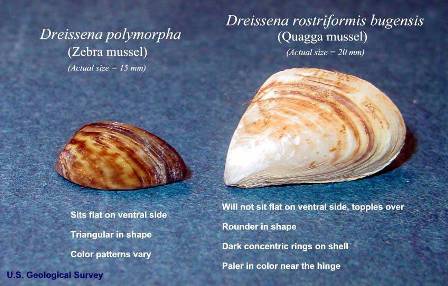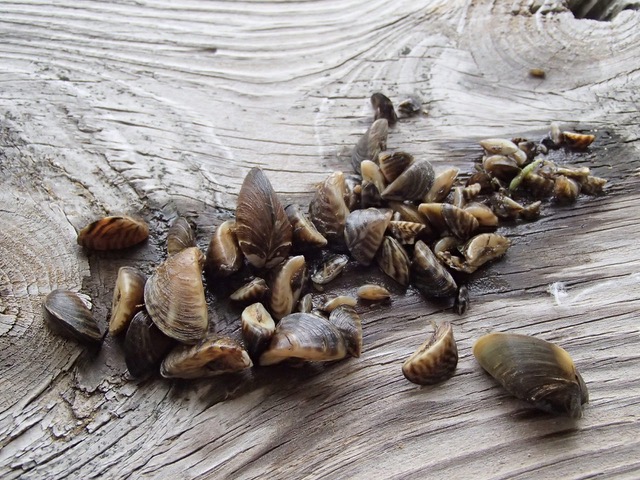EPISODE 311 INVASIVE SPECIES…SNAKEHEADS , ZEBRA AND QUAGGA MUSSELS (and others)
alan skeoch
April 2021
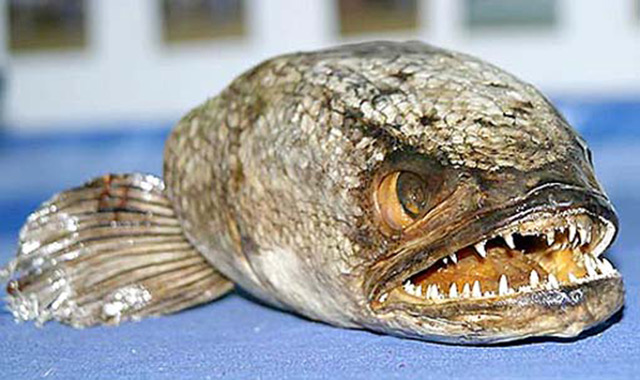
THE PERFECT STORM (since 1960)
I WAS startled to discover there are over 180 invasive species in the Great Lakes by the last count. Mercifully most of these creatures
and plants are no problem. Small populations that do not survive long. That is small comfort because the big populations of invasive
species are capable of upsetting the delicate balance of life in the Great Lakes as was explained in earlier Episodes dealing with the
Seal Lamprey and the Alewife. In 1965 Robert Tanner countered the invasions of the Alewife which had multiplied into the millions by
introducing two other ‘invasive species’, namely the Coho and Chinook Salmon whose voracious appetites seems to have brought the
alewife under control. So much so that sport fisherman are concerned that the alewife decline is affecting the coho and chinook populations
and, as a direct result, the economic profits of the $80 million sport fishery.
Here are some of the other invasive species that are now thriving or possibly about to thrive in Great Lakes Waters.
1) ZEBRA AND 2) QUAGGA MUSSELS
Three actions have seriously affected the Great Lakes since the stocking of Pacific Salmon to control the alewife problem.
First, believe it or not, the Clean Water Act of 1970 reduced the number of nutrients flowing into the Great Lakes.
‘Damned if you do and damned if you don’t’..Water was cleaner but less food for the food chain. Then, sometime in the
1980’s some Zebra mussels were dumped from ship bilge tanks somewhere in the Great Lakes. They loved their new
home and multiplied by the hundreds of thousands. And then an even worse accidental arrival of Quagga mussels
occurred in the 1890’s. Both mussels loved their new home even if they did not like each other much. The Quagga mussels
appear to have become dominant.
Why are the Zebra and Quagga mussels a problem. They clean the Great Lakes water. Suck in nutrient laden water. Pick the
plankton. Eject nice clean water. That does not sound so bad until you think about it. Cleawater has no food floating around.
The bottom of the food chain begins to starve which means ultimately that the whole food chain starves.
One mussel can filter up to a liter of water per day. People living near Lake Ontario back in the late 1960’s say that they could see down into the water about 6 inches. In July of 2011 the 158 year old shipwreck of “Queen of the Lakes” was found near Sodus Point, New York. An article about the find states “The water clarity was good allowing about 75 feet of visibility…” From 6 inches of visibility to 75 feet! Nice for Wreck Diving (if you can see through the mussels) but it can mean starvation for fish.
So nice clean clear water is proof that the Great Lakes are in deep trouble.
Another way to find out that might hurt is to take a stroll in the water. But watch out. The sharp edges of the Quagga mussel will slice your feet
like they are slabs of bologna.
The mussel invasion was brought to my attention when an amateur photographer with a waterproof camera reported his findings as he sat
on a pier … perhaps the pier at Port Credit. When he looked at his film he saw densely packed mussels in seemingly infinite numbers…just
below his feet. All the mussels busy cleaning the water of zooplankton and other nutrients. The result? A dead world.
Is there a solution. Is there something that will eat the mussels? Turns out there is. The means another invasive species …the Goby
like mussel meat and seems able to break open the casing. But has the goby also become a problem? The Goby is here already.
 The invasive round goby may benefit Lake Erie as it eats invasive zebra and quagga mussels. However, the goby’s long-term effects within the food chain are unknown.
The invasive round goby may benefit Lake Erie as it eats invasive zebra and quagga mussels. However, the goby’s long-term effects within the food chain are unknown.
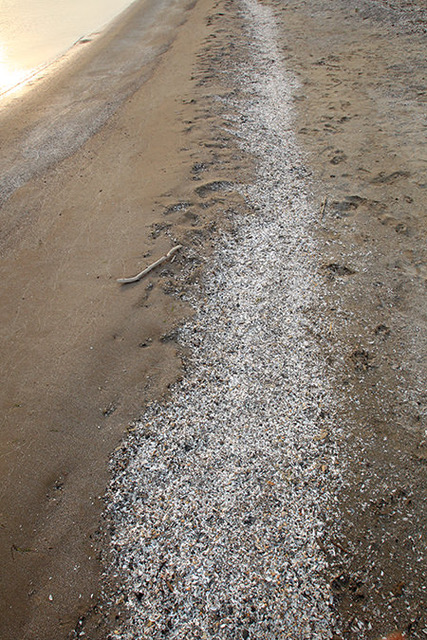 .
.Sharp edged Zebra and Quagga shells make strolling along
a sandy beach in bare feet impossible. Wadiing even worse.
3) The sea Lamprey
Populations are under control using poisons in their breeding rivers…called ‘lampricides’. As a result the
sea lampreys population has dropped 90% from its worst years. But he sea lampreys are still present.
4) Northern Snakehead

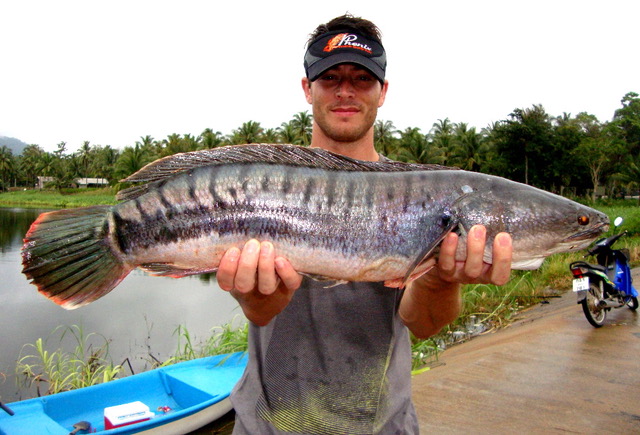

Sometimes called the Frankensten fish since it kills and eat other fish, amphibians and even small mammals with its
mouthful of spine like teath. Even more frightening is the fact that the Snakehead can live out of water for up to
a week. Snakeheads have been sighted but are not at the scourge stage yet.
5) Spiny Water Flea



Almost invisible to the human eye, the Spiny Water Flea has a long tail with spikes on it. the tail is 70% of the
spiny water fleas body. As a result it is hard for juvenile native fish to eat them. Juvenile fish depend one
plankton to survive in the water column of life. Since inedible they are free to multiply.
The bottom picture shows a grouping of spiny water fleas with their spiny tails .
6) Killer Shrimp
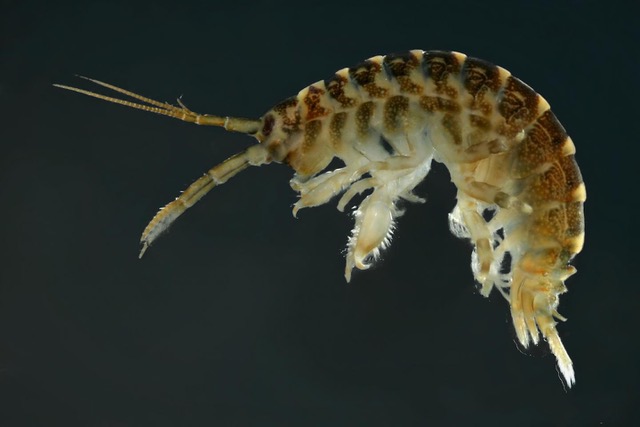
This shrimp kills anything trying to prey upon it. WARMING water temperature of the
Great Lakes makes the likelihood of the killer shrimp becoming established and
reducing the food supply of juvenile fish and thereby affecting the ecology of the lakes.
7) Asian CARP

Asian Carp can eat 20% to 120% of their body weight in plankton every single day of their life. Dense populations
in the upper Mississippi river systems threaten to enter the Great Lakes at the base of Lake Michigan. Pictures
of Asian Carp jumping 8to 10 feet in the air are common. They can even injure boaters and fishermen but their
threat to plankton is the most serious.
POST SCRIPT
There is much more than can be said about each of these creatures.
alan skeoch

